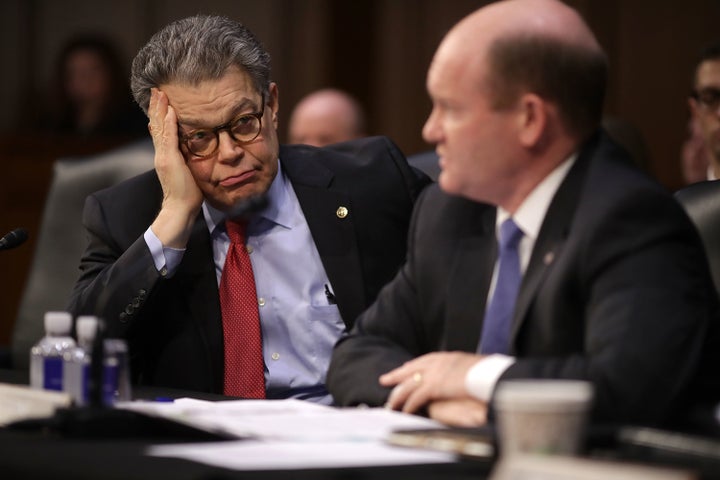
Chip Somodevilla via Getty Images
Many Senate Democrats believe that a Supreme Court nominee should be within the mainstream and therefore able to earn the support of 60 senators. Given the stakes, this hardly seems unreasonable, but Republicans now claim that a 60-vote threshold for judicial nominees would be unfair. Here are the 12 times they insisted on a 60-vote threshold for Obama’s lower court nominees—and, really, once Republicans demanded that a trial court judge in Rhode Island needed 60 votes, shouldn’t Democrats be able to ask for the same for the highest court in the land?
- Senate Republicans filibustered D.C. Circuit nominee Caitlin Halligan (twice) and 9th Circuit nominee Goodwin Liu, even though both had majority support.
- Senate Republicans filibustered 10th Circuit nominee Robert Bacharach of Oklahoma, even though he was supported by both of his Republican home-state Senators, Inhofe and Coburn. His nomination was not controversial (as evidenced by his 93-0 confirmation eight months later) but Republicans set an arbitrary cut-off date for confirmations during the 2012 presidential election year—similar to their historic mistreatment of Judge Merrick Garland’s nomination to the Supreme Court last year.
- Senate Republicans tried to filibuster President Obama’s very first judicial nomination. In March 2009, President Obama tried to set a bipartisan tone on judicial nominations by reaching across the aisle to the most-senior Republican Senator, Richard Lugar of Indiana, and nominating then-U.S. District Court Judge David Hamilton, whom the Senate had confirmed by voice vote in 1994. Despite this consultation and Sen. Lugar’s support, Judge Hamilton was subjected to a filibuster vote.
- Senate Republicans tried to filibuster 9th Circuit nominee Andrew Hurwitz of Arizona, even though he was supported by both of his Republican home-state Senators, Kyl and McCain.
- Senate Republicans tried to filibuster a district court nominee, Jack McConnell of Rhode Island. In 2011—for only the third time in history—Republicans forced a filibuster vote on a district court nominee.
- Senate Republicans even forced filibuster votes for 4th Circuit nominee Barbara Keenan and 11th Circuit nominee Adalberto Jordan. Both were overwhelmingly confirmed—Keenan 99-0 and Jordan 94-5—but filibuster votes were necessary because Senate Republicans had callously blocked their confirmations for four months.
- And, of course, Senate Republicans tried to block D.C. Circuit nominees Patricia Millett, Nina Pillard, and Robert Wilkins. Their obstruction had nothing to do with these nominees’ records, and when they flatly refused to confirm any further nominees to this court, Senate Democrats were forced to respond by changing the confirmation threshold for lower court nominees—intentionally keeping the 60-vote threshold intact for the Supreme Court because of the magnitude of the court.